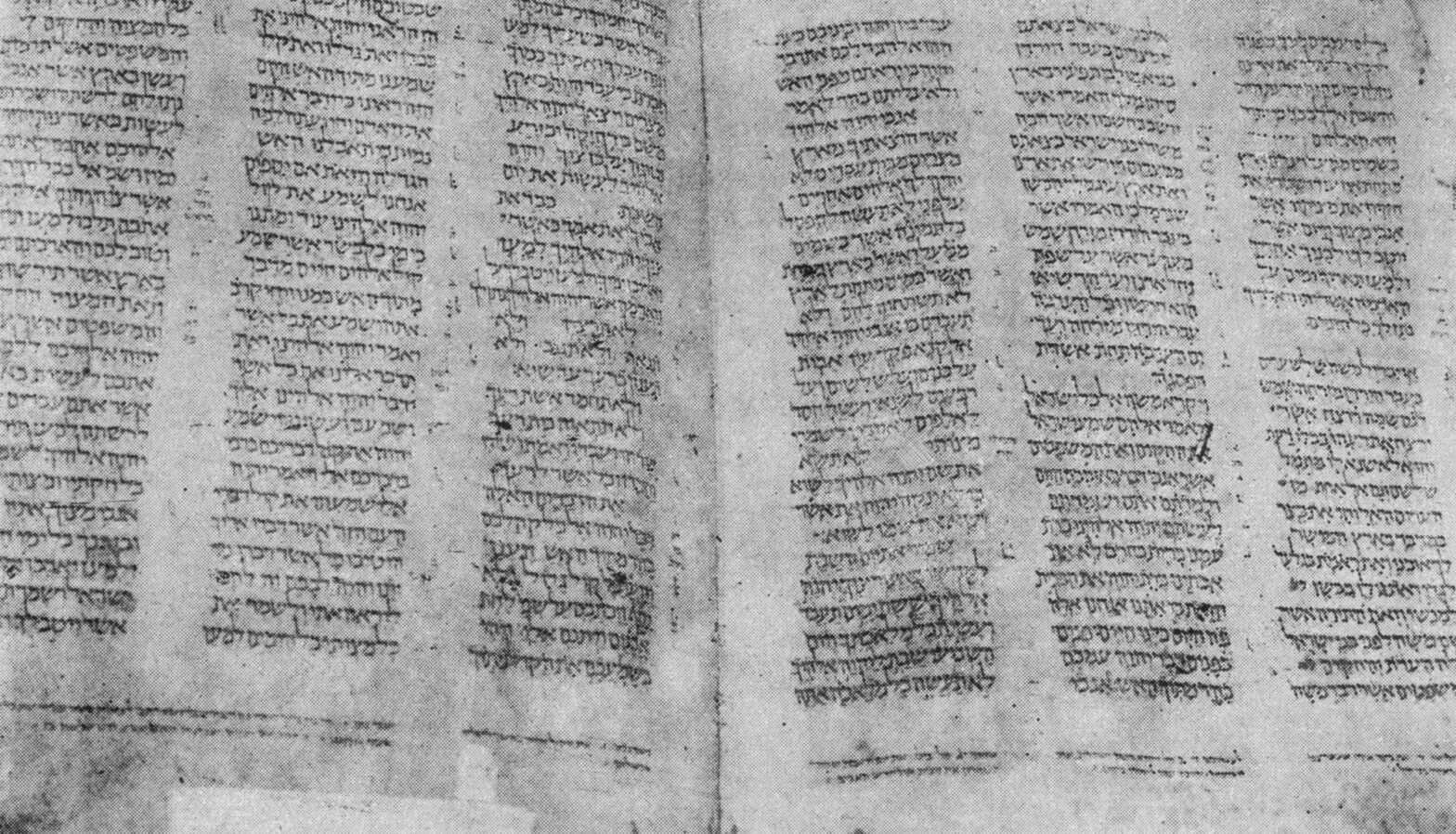With the Leningrad Codex, the Aleppo Codex is one of the most important witnesses to the text of the Hebrew Bible.1
Printed texts definitely have their virtues. But sometimes really nothing can substitute for looking at an original manuscript.
There are a couple very good ways to access the Aleppo Codex online, as well as an index to help you find your way around once you have it up.
Where to Find the Aleppo Codex Online
There seem to be three major versions of the Aleppo Codex that are openly available online. These include
- An AJAX version photographed by Ardon Bar Hama. This version used to be available via a flash site at AleppoCodex.org. But that domain now simply redirects to Bar Hama’s non-flash site.
- The PDF version that provides a scan of Moshe Goshen-Gottstein’s facsimile edition (Jerusalem: Hebrew University, 1976). This version is manuscript number 3 in the collection provided by Tanach Online.
- An unprovenanced PDF version. This version is manuscript number 4 in the collection provided by Tanach Online.
Each version contains good quality images, but the unprovenanced PDF is by far the most incomplete.
The other two versions (Bar Hama’s and Goshen-Gottstein’s) are most complete. And using both together can sometimes be helpful in supplementing or sorting out issues in either one version or the other.2
Where to Find a Passage in the Aleppo Codex
Finding a passage in the Aleppo Codex was pretty straightforward for several years.
AleppoCodex.org had a nice menu you could use to jump straight to the portion of the manuscript you were wanting to consult.
That changed, however, when that Flash site got deprecated in favor of the current AJAX delivery method on Bar Hama’s website.
What you get now are simply the page images with no indexing information. So, using only that, you simply have to read around in the text to find out where you are and where you want to be.
There are, however, two other indexes to the Aleppo Codex that can make it easier for you to find what you need.
Option 1: Goshen-Gottstein’s Edition
In Goshen-Gottstein’s facsimile edition, the page footer includes both a page number and the range of text written on that page.
The book names, as well as the chapter and verse numbers are all written in Hebrew. But if you’re comfortable enough with Hebrew to read a Hebrew manuscript in the first place, this reference system should be pretty convenient.3
A downside is that the scan of this edition is comparatively dark. And there’s nothing on the page to tell you what leaf or side you’re on. So, to move from the scan of Goshen-Gottstein’s edition to consult Bar Hama’s images, you’ll need to
- Do the math to calculate which leaf you’re on based on the number assigned to a given page and
- Observe whether a given page is showing the front (and so “recto”) or back (and so “verso” of a given leaf).4
Option 2: A Combined Index
The other option is to use a combined index that gives you the information you need to look up a passage in the Aleppo Codex in either Bar Hama’s archive or the Goshen-Gottstein facsimile scan.
The base of this index came from the old AleppoCodex.org Flash site. I then corrected and supplemented this information by consulting the Goshen-Gottstein facsimile.
In this index, I’ve also added some additional notes about oddities in the three Aleppo Codex versions I’ve mentioned above—the two main ones from Bar Hama and Goshen-Gottstein, as well as the additional and unprovenanced PDF.
The index
- lists the biblical passages on each leaf of the Aleppo Codex,
- gives the leaf and side for those passages if you want to look up the corresponding image in Bar Hama’s archive,
- gives the page number if you want to easily reference the scan of Goshen-Gottstein’s facsimile, and
- adds some additional notes about where there are gaps in the online versions of the codex.
To get a copy of this index, just click the button below to give me your name and email address, and I’ll be happy to send it along directly. Enjoy working with the Aleppo Codex!
Header image provided by Wikimedia Commons. ↩
For a good list of some other Hebrew manuscripts that have been brought online to varying degrees, see Charles Grebe, “Digital Facsimiles of Biblical Hebrew Manuscripts,” Animated Hebrew, n.d. ↩
If you need an easy reference for Hebrew numbers, see the back cover of William R. Scott and H. P. Ruger, A Simplified Guide to BHS: Critical Apparatus, Masora, Accents, Unusual Letters and Other Markings, 3rd ed. (affiliate disclosure; North Richland Hills, TX: Bibal, 1995). ↩
In keeping with usual practice, “recto” (“r”) refer the first side read on a leaf. “Verso” (“v”) refers to the second side read. For left-to-right languages, this means the recto is on the right-hand side of the codex and the verso is on the left-hand side. But for right-to-left languages, the same terminology is often employed in reverse with the recto falling on the left-hand side and the verso falling on the right-hand side. What is common to the two seemingly opposite definitions, however, is that the recto is always the first side read on the leaf and the verso is always the second, irrespective of the direction the text runs. ↩

Leave a Reply